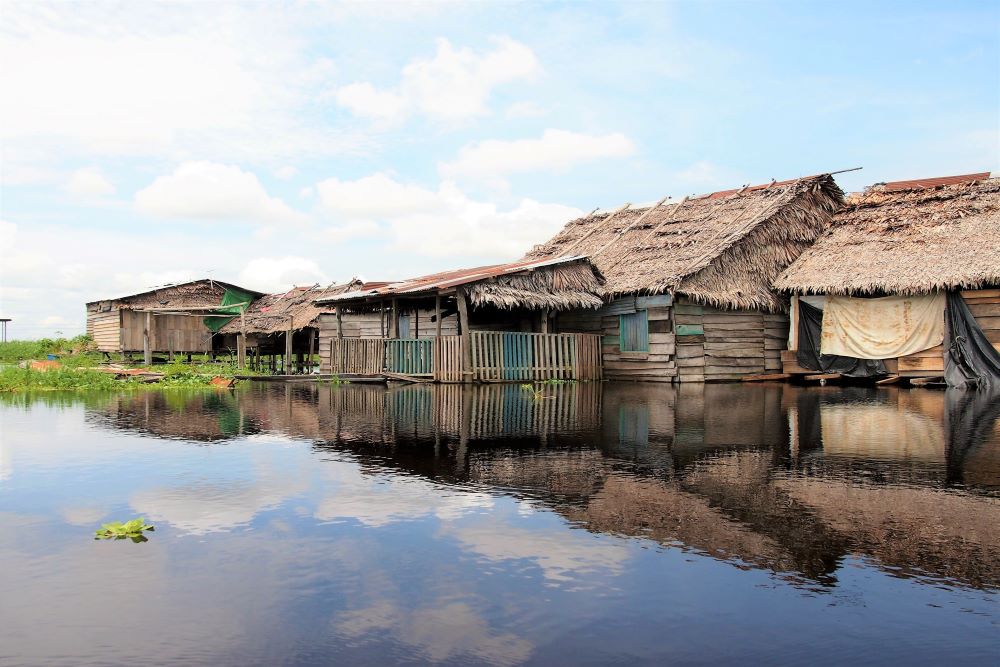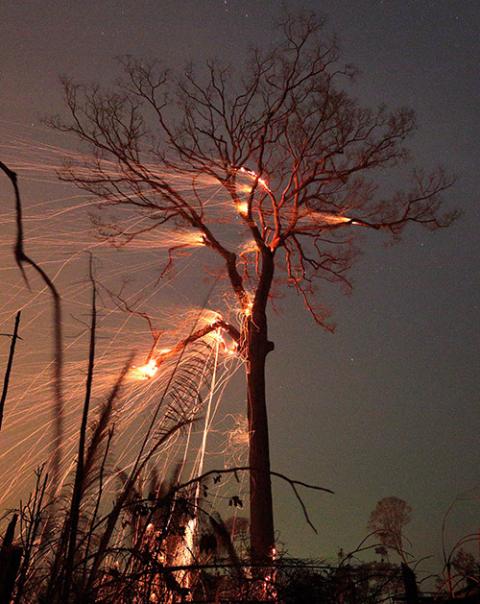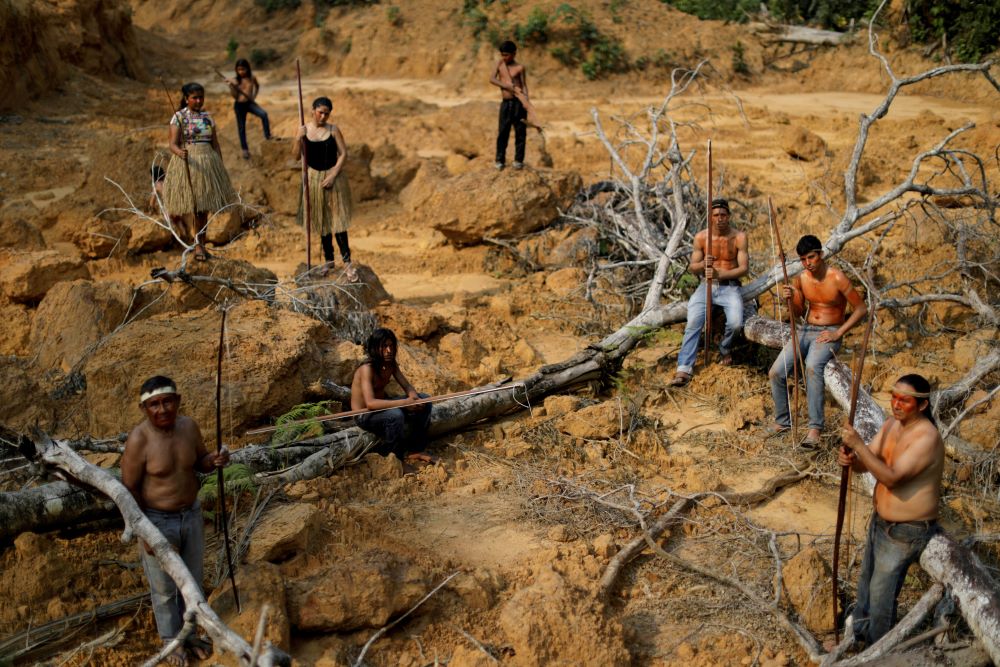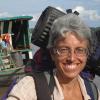
Iquitos, Peru (Unsplash/Deb Dowd)
In his years as a Jesuit priest, including 15 among the Awajún and Wampis people in Peru's northern Amazonas region, Fr. Fernando Roca has seen the gradual degradation of tropical ecosystems, as forests turned into fields and cities sprawled into once-pristine landscapes.
He recalls a Kayapo Indigenous community in Brazil that was nestled in an expansive forest when he lived there in the 1980s, but was surrounded by fields of crops 20 years later. And the trees that had hugged the banks of Peru's Amazon River when he traveled it in the 1970s were gone when he made the same trip 40 years later.
The destruction Roca has witnessed is described in scientific detail in a new report about the Amazon Basin's natural and human history — at more than 1,300 pages, probably the most comprehensive ever published — that was officially released Nov. 12 at the United Nations climate conference, COP26, in Glasgow, Scotland. But the report does not focus only on the past; it also points to potential solutions for the Amazon Basin.
"It not only informs, but it also offers paths for seeking responses to situations that have deteriorated both the inhabitants and the Amazon region, or which threaten to deteriorate it," Roca, an ethnobotanist who served on the science steering committee for the report, told EarthBeat. "The difference between this report and others is the part that offers proposals and recommendations ... and which shows what could happen if we don't act more quickly."

A section of the Amazon jungle burns as it is cleared by farmers in Rio Pardo, Brazil, Sept. 15, 2020. (CNS/Reuters/Ricardo Moraes)
The report was the brainchild of Brazilian climate scientist Carlos Nobre and Jeffrey Sachs, director of Columbia University's Center for Sustainable Development, both of whom attended the Synod for the Amazon at the Vatican in October 2019.
Around the same time, they and Emma Torres, a sustainability expert with the United Nations, convened a group of scientists, called the Science Panel for the Amazon, to prepare a comprehensive report about the state of the Amazon and possibilities for development that would not result in further destruction of the tropical forest.
The idea was to hold a series of in-person meetings, but the COVID-19 pandemic forced the effort to go online. Meanwhile, the number of participants expanded to around 200, including several Indigenous leaders and researchers of African descent.
The final document, called the "Amazon Assessment Report 2021," consists of four sections.
The first describes the geological and biological processes that, over tens of millions of years, gave the Amazon Basin its astounding biological diversity. The second relates that biodiversity to the diversity of human cultures that have arisen in the region.
The third section describes the impact of human habitation on the region, especially in the past century or so, as rubber barons, miners, oil prospectors, loggers and drug traffickers have taken advantage of Amazonia's natural wealth; highways and dams have changed the landscape; and cities have grown.
The final section offers possible paths to development that do not require razing forest, as well as options for repairing some of the damage to the region's ecosystems. Scientists estimate that human activities have destroyed 17% of the region's forest and led to the degradation of another 17%, and the section offers recommendations for restoration of degraded forest, as well as for income-producing activities in which communities could engage that do not require clearing forest.
Although the word "Amazonia" conjures images of vast, pristine forests, the scientists who participated in the report are quick to point out that the region's ecosystems have been shaped by the interplay between the forests and the network of rivers that begin in the Andes Mountains and end in the Atlantic Ocean, a continent away.
The report "starts with the assumption that the Amazonian biome is an impressive interaction of water and forest," resulting in complex ecosystems to which the region's inhabitants adapted over thousands of years, Roca said.
"The idea of a relationship with nature, of being part of nature, has been a key element enabling Amazonian peoples to interact in this biome without harming it," at least until the last century, he added.
That has changed over the past 100 years, as outsiders have moved into the Amazon region and the population has increased, including in some Indigenous territories. Sources have long put the population of Amazonia at 34 million, but when the researchers compiled data, they found that the real figure is closer to 47 million.

People from the Mura tribe are pictured in a file photo at a deforested area in unmarked Indigenous lands inside the Amazon rainforest near Humaita, Brazil. Bishops working in the Amazon oppose efforts they say threaten Brazil's rainforest by allowing illegally deforested federal lands to become private holdings. (CNS/Reuters/Ueslei Marcelino)
In addition, "the Amazonian population is becoming mainly urban, rather than rural, and this poses a challenge," Roca said, noting that along with larger cities, like Manaus in Brazil or Iquitos in Peru, small and midsize urban areas are also growing.
When he was studying anthropology as an undergrad and working as a priest in northern Peru, "the places where there were Indigenous communities were very remote, far from the area of influence of the Peruvian government," Roca said. "Now any anthropology student in Peru has to take into account the impact of urban areas on the [Indigenous] communities," as people from communities migrate to cities, settling on the peripheries, where they often lack basic services like water, sanitation and health care.
And although the report offers guideposts for future action, those changes and the great diversity of ecosystems mean that one size does not fit all, the report's authors caution.
"Amazonia is such a large and complex watershed — [including parts of] eight countries and a territory [French Guiana], with different problems, some concentrated in one place and some in another — that there is no single solution," said Andrea Encalada, vice rector of San Francisco University of Quito, in Ecuador, who coordinated the report with Nobre.
"The next step is a zonification of where to concentrate efforts," she added. "Now we know where the problems are, but where do we need to work most urgently?"
One thing Nobre would like to see the Amazonian countries do is tackle organized crime, because much of the deforestation and many of the wildfires that have occurred in Amazonia in recent years are related to illegal land grabbing for ranching, drug crops and land speculation, while unregulated gold mining is also expanding in the Amazon Basin.
But despite various pledges by countries to stop deforestation — in 2014 at the United Nations, in 2019 in Leticia, Colombia, and in November at COP26 — concerted action has been elusive.
In recent years, Catholic bishops and other church leaders in Amazonia have spoken out more strongly about the threats to the region's ecosystems and its people.
The final document of the Fifth General Conference of Bishops of Latin America and the Caribbean, held in Aparecida, Brazil, in 2007, included a section on Amazonia, largely at the insistence of the Brazilian bishops. That was followed in 2015 by Pope Francis' encyclical, "Laudato Si', on Care for Our Common Home."
Advertisement
For Nobre, who remembers the 1980s, when many Brazilian bishops supported the military government's push to open the Amazon to development, that is a welcome change.
"Laudato Si' was the first time a pope really put equal emphasis on saving the planet [and] saving humans," he told EarthBeat. "The well-being of humans depends totally on planetary health. That became a clear key message for the Catholic Church all over the planet. Then three years later, there was the Synod for the Amazon," which marked the first time a large group of bishops had publicly acknowledged the importance of Indigenous people's knowledge, he added.
Roca hopes the new report will serve as a guide for church workers and others, including non-profit organizations and research groups, who work in the Amazon.
"I hope the Catholic Church will take advantage of this document and use it to improve the quality of the work it is doing," he said.








